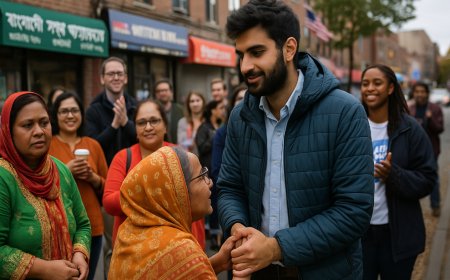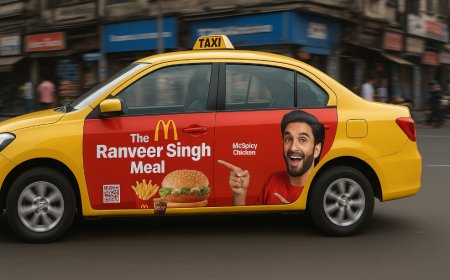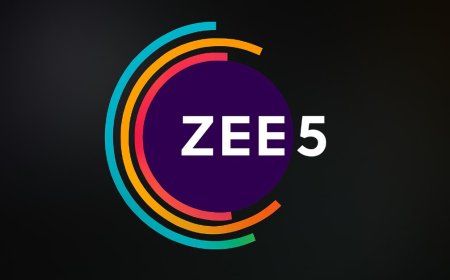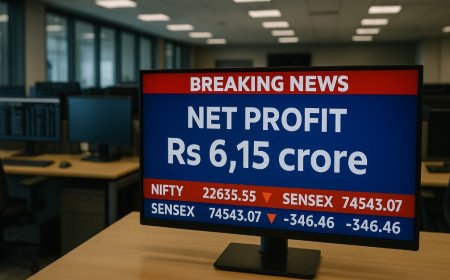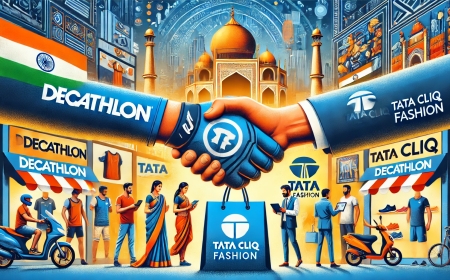Speed Meets Style: How Quick Delivery is Transforming Fashion Retail in India
Explore how fashion giants like Myntra and AJIO are revolutionizing Indian retail by integrating ultra-fast delivery models, reshaping shopper behavior, and raising the bar for customer expectations.

Introduction: A New Chapter in Fashion Retail
In the evolving world of fashion, style is no longer the only deciding factor—speed has emerged as the new currency of customer satisfaction. As Indian consumers get accustomed to next-day grocery delivery and 10-minute snacks, their expectations from fashion e-commerce have shifted dramatically.
No longer are shoppers content to wait five or seven business days for a new outfit. They want their purchases to arrive almost as fast as their cravings. In this new race for speed, platforms like Myntra, AJIO, and a rising army of fashion-tech startups are reengineering the rules of online apparel shopping.
Welcome to the era where fast fashion meets fast fulfillment.
Why Speed Matters in Fashion Today
With growing digital penetration, especially post-pandemic, the Indian fashion shopper has changed. What once was a price-sensitive, convenience-driven customer now also demands instant gratification. And for good reason:
-
Occasion-based shopping is on the rise. Shoppers often buy outfits for an upcoming wedding, party, or office event. Delayed delivery could mean a missed moment.
-
Social media influence fuels impulse purchases. An influencer wearing a certain look can spark a wave of urgent demand.
-
Competition with offline stores makes speed crucial. If a local boutique offers ready availability, online platforms must match or exceed that convenience.
Quick delivery isn't just a value-add anymore—it’s a core offering.
Myntra’s Fast Forward: Leading the Charge
As one of India’s largest online fashion retailers, Myntra was among the first to realize that delivery speed could be a powerful differentiator.
M-Xpress and 24-Hour Delivery
Myntra launched its M-Xpress service in top metros, promising delivery within 24 to 48 hours. For select pin codes, same-day delivery is now being tested through logistic tie-ups and strategically placed warehouses.
The platform has invested heavily in technology, warehouse automation, and last-mile partnerships to make this possible.
Myntra’s Festival Rush Strategy
During festive sales or special collections, Myntra increases its same-day dispatch capacity. For instance, its End of Reason Sale often comes bundled with rapid delivery on curated items, tapping into high urgency shopping behavior.
AJIO’s Turbo Move: From Store to Door—Fast
AJIO, owned by Reliance Retail, has quietly but efficiently entered the fast delivery segment with a strategic advantage: its hybrid model of online + offline supply chains.
Store-to-Door Fulfillment
Leveraging Reliance’s vast offline network, AJIO can now fulfill certain fashion orders directly from nearby stores, cutting down delivery time to less than 24 hours in cities like Mumbai, Delhi, and Bengaluru.
This hyperlocal strategy reduces warehouse dependency and utilizes existing inventory for faster movement.
Tech-Driven Logistics
AJIO’s parent company JioMart has already set logistics benchmarks in grocery delivery. This infrastructure is now being extended to fashion and lifestyle, positioning AJIO as a serious contender in the express fashion segment.
Fashion Startups Accelerating the Race
It's not just the giants—nimble startups in the D2C fashion space are using quick delivery as a marketing differentiator.
Examples:
-
The Souled Store offers express delivery options on select merchandise, especially fan-based collections and drops that thrive on time-sensitive demand.
-
Bewakoof.com frequently runs limited-edition collections with guaranteed 24–48 hour delivery, creating urgency and loyalty.
-
Newer labels on marketplaces like Amazon Fashion and Flipkart are tagging products with "Prime/Plus Fast Delivery" to gain visibility and conversions.
This trend showcases how logistics is no longer just a backend process—it’s now part of brand strategy.
Behind the Scenes: Logistics Powering Quick Fashion
Fulfilling fast fashion orders at scale requires more than just intention. Here's how leading players are doing it:
1. Micro-Warehousing
Companies like Myntra are now distributing inventory across smaller warehouses near major cities, enabling faster last-mile reach.
2. AI-Powered Inventory Mapping
Advanced algorithms predict what products should be stocked in which region, reducing transit time by pre-positioning inventory based on local demand.
3. Gig-Economy Workforce
Quick delivery is being powered by flexible gig delivery models, with brands partnering with hyperlocal platforms like Dunzo, Shadowfax, and Loadshare for fashion fulfillment.
4. Smart Packaging
Innovations in eco-friendly and smart packaging reduce time spent on packing, scanning, and dispatch, shaving crucial hours off the fulfillment cycle.
How Consumers Are Responding
The results are clear: convenience-driven fashion shopping is here to stay.
Purchase Behavior Shift
-
More users now filter search results by "fast delivery" tags.
-
Cart abandonments reduce when customers see delivery promises within 1–2 days.
-
Premium customers, especially urban millennials, pay extra for faster shipping.
Loyalty Boost
Brands that deliver fast also see an increase in repeat purchases, as consumers associate them with reliability and responsiveness.
The Competitive Pressure is Real
For players like Amazon Fashion and Flipkart Fashion, who already have strong logistics backing, quick delivery is being turned into a value war.
As a result, even mid-sized marketplaces and brand-owned websites are now forced to match these SLAs (Service Level Agreements) or risk losing customers.
This rising consumer expectation is forcing the entire ecosystem—from suppliers to warehouse managers to delivery agents—to adapt and innovate.
Challenges on the Road Ahead
While fast fashion delivery sounds great, it comes with its own hurdles:
-
Higher operational costs in manpower, inventory stocking, and packaging
-
Environmental concerns around carbon emissions and return shipping
-
Infrastructure gaps in Tier-2 and Tier-3 cities
-
Pressure on quality control, as speed cannot compromise accuracy
Brands will need to balance speed with sustainability and cost-efficiency to win long-term.
What the Future Holds
Hyper-Personalized Logistics
Soon, AI might not just predict what you’ll buy—but how quickly you’ll want it delivered, personalizing SLA options at the checkout.
Sustainable Fast Delivery
Expect fashion brands to offset their rapid delivery carbon footprints with green initiatives or consolidated delivery models.
Fast Try-and-Return Services
Much like food delivery, fashion e-tailers may introduce try-at-door services with instant return pickup—blending convenience and personalization.
Subscription-Based Express Access
Platforms may introduce premium memberships offering guaranteed same-day or next-day delivery across categories, much like Amazon Prime but fashion-exclusive.
Conclusion: Speed is the New Style Statement
The fashion industry is witnessing a paradigm shift—from style icons to supply chain heroes. As brands compete for eyeballs, wallets, and wardrobes, delivery speed has emerged as a defining battleground.
What's Your Reaction?
 Like
0
Like
0
 Dislike
0
Dislike
0
 Love
0
Love
0
 Funny
0
Funny
0
 Angry
0
Angry
0
 Sad
0
Sad
0
 Wow
0
Wow
0



